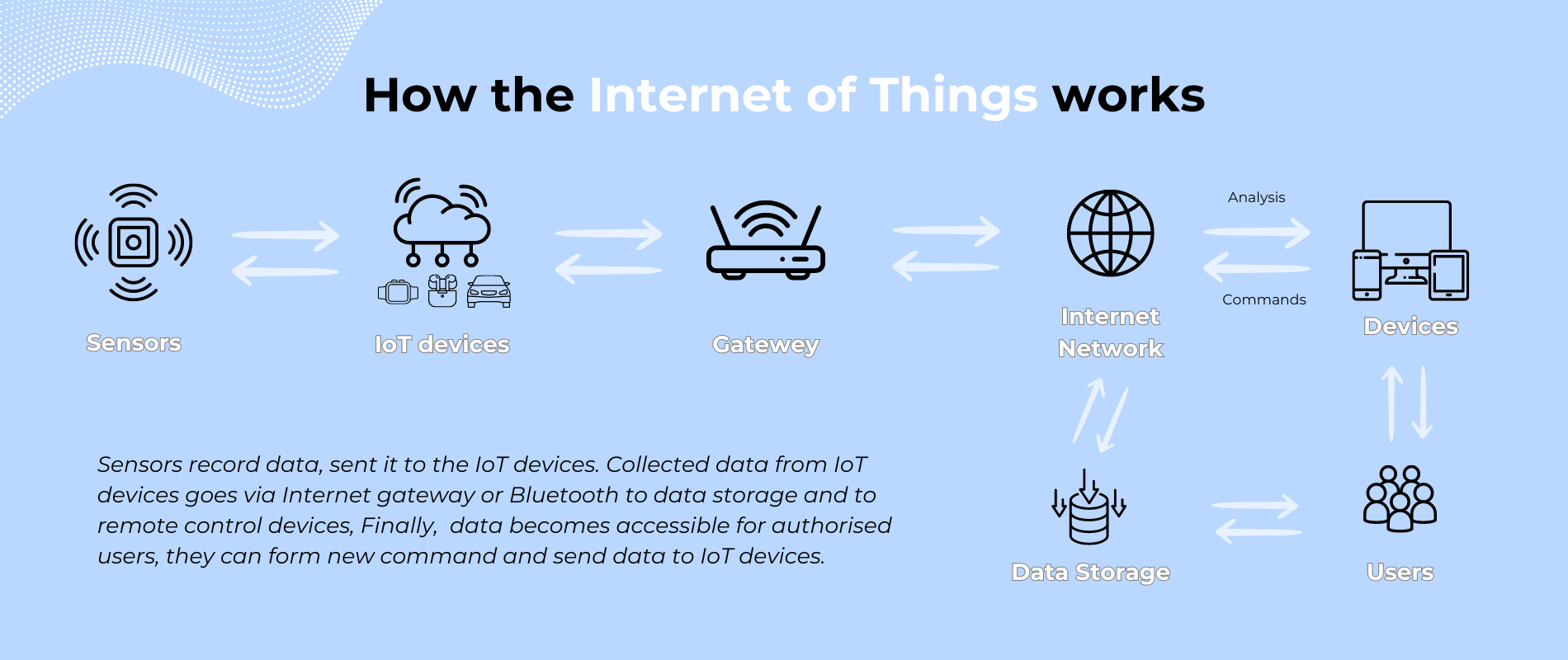Building a Smarter World: The Role of IoT in Modern Technology


The Internet of Things (IoT) is a revolutionary concept that opens up new horizons in the connection between physical objects and the digital world. Typically associated with home appliances, IoT actually affects various industries, from medicine to manufacturing. Let’s have a closer look at this phenomenon, as well as its opportunities, privileges, and so on.
IoT is a network of physical objects connected and exchanged over the Internet. IoT can be used anywhere: cars, household appliances or production equipment. The basic idea is to provide these objects with intellectual capabilities and the ability to interact with them without direct human intervention.
The Internet of Things (IoT) is critically important for several reasons, as it revolutionizes various aspects of our lives. IoT devices provide seamless connectivity between the physical and digital worlds by collecting huge amounts of data from the environment using sensors and other embedded technologies. This data can provide valuable information about processes, behaviours, and environments that were previously unavailable or difficult to track.
The Internet of Things promotes automation by allowing devices to share data and interact with each other without human intervention. It promotes innovation by creating new opportunities for businesses to develop new products and services. Entrepreneurs and businesses can use Internet of Things technologies to create breakthrough solutions that solve existing problems or meet unmet needs. These innovations stimulate economic growth, create jobs and stimulate investment in research and development.
The Internet of Things can make a significant contribution to efforts to ensure environmental sustainability. By optimizing the use of resources, monitoring the state of the environment and reducing waste, Internet of Things technologies can help mitigate the effects of climate change. Also, implement sustainable practices in industries such as agriculture, energy, transportation and waste management.
In the healthcare sector, IoT devices play a vital role in remote patient monitoring, telemedicine, medication management and personalized medical care. These technologies allow medical professionals to provide more effective and affordable medical care, and for people themselves to take care of their health and well-being.
The Internet of Things (IoT) provides many benefits that impact different areas of life and business. Here are some of the main advantages of IoT:
IoT allows you to automate many processes that previously required human intervention. This helps to increase efficiency, reduce time spent, and reduce the number of errors.
With the Internet of Things network, you can track and monitor various parameters in real time, such as temperature, humidity, inventory levels, and more. This allows you to quickly respond to changes and avoid negative consequences.
IoT helps you use resources such as energy, water, raw materials, and more efficiently. Data collection and analysis allows you to identify patterns and identify opportunities for optimization.
Collecting data from IoT devices allows companies to gain valuable information about the use of their products and services. This allows you to improve their quality and meet the needs of customers.
IoT makes our daily life more convenient and comfortable. For example, smart home systems allow you to successfully manage lighting, temperature, and security in your home using mobile apps.
IoT is also being used to create new entertainment and entertainment options, such as smartwatches, toys, and virtual assistants, that increase the level of fun and communication with technology.
The development of IoT trends opens up new opportunities for innovation and the development of new products and services. It encourages competition and promotes the creation of new markets and industries.
Although the term “Internet of Things” first appeared in 1999, the idea of connecting things to the Internet existed much earlier. The first devices that can be considered IoT were developed back in the 1970s. However, the real breakthrough occurred in the 2010s due to the rapid development of microcontrollers, wireless technologies and cloud services.
IoT technology provides modern opportunities, including wireless communications (such as Wi-Fi, Bluetooth, Zigbee), sensors, cloud computing, artificial intelligence, and data analytics.
In a home environment, IoT is often used to automate household processes such as controlling lighting, temperature, and security. In the industry, IoT helps improve manufacturing processes, equipment monitoring, and supply chain management. Examples of IoT applications

This usually involves various aspects, from physically connecting devices to the Internet to developing software to manage and monitor these devices. Let’s have a closer look at each of the stages of working with IoT:
This is the first step in working with IoT. To achieve this, you must have devices that can be connected to the network, such as sensors, controllers, or IoT devices. These devices can use various communication protocols, such as Wi-Fi, Bluetooth, Zigbee, or LoRaWAN.
At this stage, it is important to ensure the security and security of the connection to avoid cyberattacks and unauthorized access to devices.
After connecting to the network, devices start collecting data. This data may include information about temperature, humidity, traffic, lighting, and more, depending on the device’s functionality.
The received data must be transmitted to the central system for further analysis and processing. This can be done directly over a wireless connection or through middleware such as a router or IoT gateway.
The data obtained is analysed in order to obtain useful information that can be used for decision-making. For this purpose, machine learning algorithms, statistical methods, or specialized software solutions are used.
One of the key advantages of IoT is the ability to interact with devices from a remote location. This means that you can manage and monitor devices over the Internet from anywhere in the world using web or mobile apps.
To work effectively with the concept of IoT, you often need to develop specialized applications for device management and data analysis. These applications can be web applications, mobile applications, or even embedded systems.
Working with IoT includes a comprehensive approach that includes physically connecting devices, collecting and analysing data, and developing software for managing and monitoring them. This requires an understanding of various technologies and methods of working with data, as well as attention to security and privacy issues.
With the growing popularity of IoT, the risks associated with this technology are also increasing. Some main problems and risks include:
IoT has the potential to change almost every industry. Here are just a few of the industries that can benefit from this technology:
The future of IoT promises even more convenience, efficiency, and innovation. It is expected that the increase in the number of connected devices, the development of artificial intelligence and the expansion of 5G networks will accelerate the development of this technology. The Internet of things is a powerful technology that is changing the way we interact with the world around us. It opens up many opportunities for automation, optimization, and innovation in various industries. However, it is important to consider the potential risks and challenges associated with this technology and develop it with data security and privacy in mind.